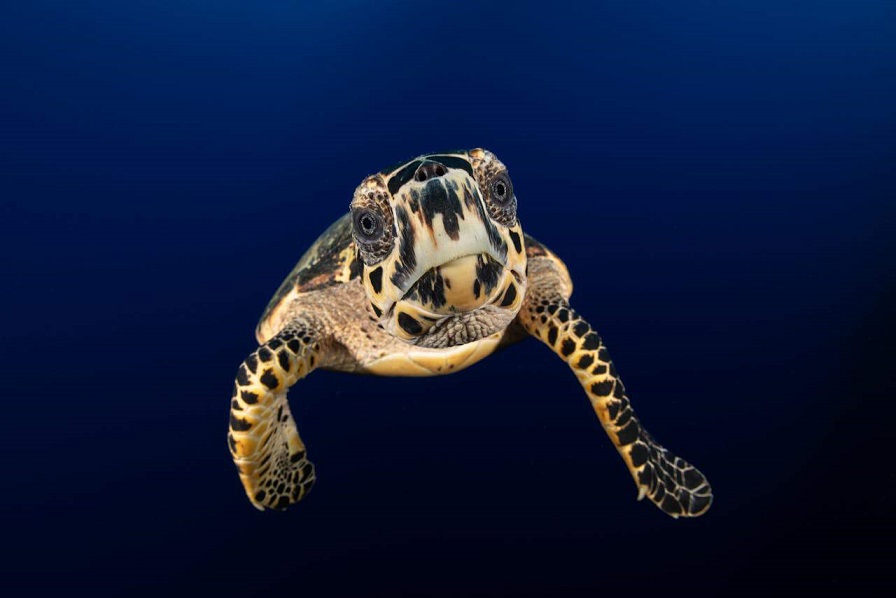
1. Costa Rica Cracks Down on Illegal Trade of Hawksbill Turtle Products
San Jose, Costa RicaThe main threat to hawksbill turtles is the commercial exploitation of juveniles and adults for their shells, despite the Convention on International Trade in Endangered Species of Wild Fauna and Flora (CITES) ban. The CR National System of Conservation Areas (SINAC) is launching a campaign on social networks to raise awareness and educate the population on the conservation and protection of hawksbill turtles.
These turtles are highly exploited by humans, being captured for trade in their meat, skin, eggs, and shell, used to make various products. Border Police officials seized products made from hawksbill turtles near the Nicaraguan border, highlighting the need to raise awareness among the population to avoid acquiring such items. The sale of handmade products from endangered wildlife is a criminal offense under Costa Rica’s Wildlife Conservation Law.
Thank you for your generous gift that will help us continue the production of this weekly, free publication
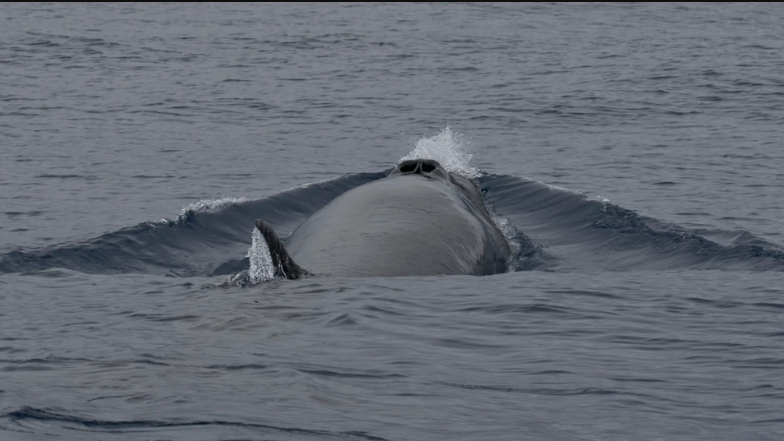
2. Marine Species Makes Resurgence After Being Hunted to Near-Extinction: ‘A Success of Conservation on a Global Scale’
Argentina’s Patagonian coast welcomed back a creature that had long been absent after being hunted to near extinction. Sei whales, the third-largest whale species, are a regular sight off the coast of Southern Argentina, thanks to global bans on commercial whaling, allowing the animals to recover in numbers. Biologist and researcher in marine ecosystems at the Argentine state science body CONICET Mariano Coscarella explained to Reuters that the sei whales’ slow rate of breeding — once every two to three years — meant it took nearly 100 years for the aquatic mammal to restore its population.
“We can consider this a success of conservation on a global scale. After hunting, which reduced the (sei whales) population to a minimum, almost 100 years later, this population started to bounce back, and now they come to the same places they used to before they had been hunted.”
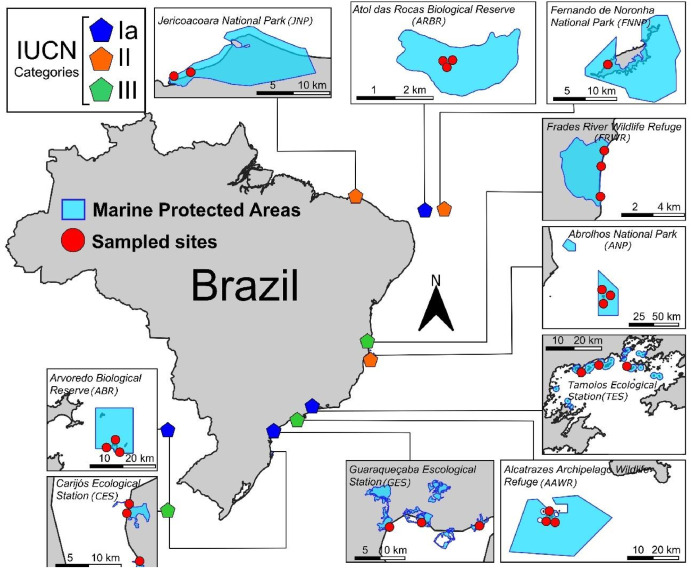
3. Chemical Contamination Affecting Filter-Feeding Bivalves in No-Take Marine Protected Areas From Brazil
Brazil — Pollution is one of the primary global threats to ocean biodiversity, often caused by deliberate or accidental discharges of waste or hazardous chemicals into the natural environments Marine protected areas (MPAs) are zones geographically delimited under pre-defined management goals seeking to reduce anthropogenic threats to biodiversity. Despite this, reports of MPAs affected by chemical contamination have grown in recent years.
Recent studies have demonstrated that aquatic contamination induces health risks to coastal areas and communities through water sources, such as rivers and groundwater. MPAs under more restrictive management and use categories are considered especially vulnerable to pollution releases; hence, the potential impacts of chemical contamination in these MPAs must be assessed, and risks must be determined as a priority. Brazil has an extensive coastline with 985.042 km2 of marine protected areas covering 26.8% of its marine biomes.
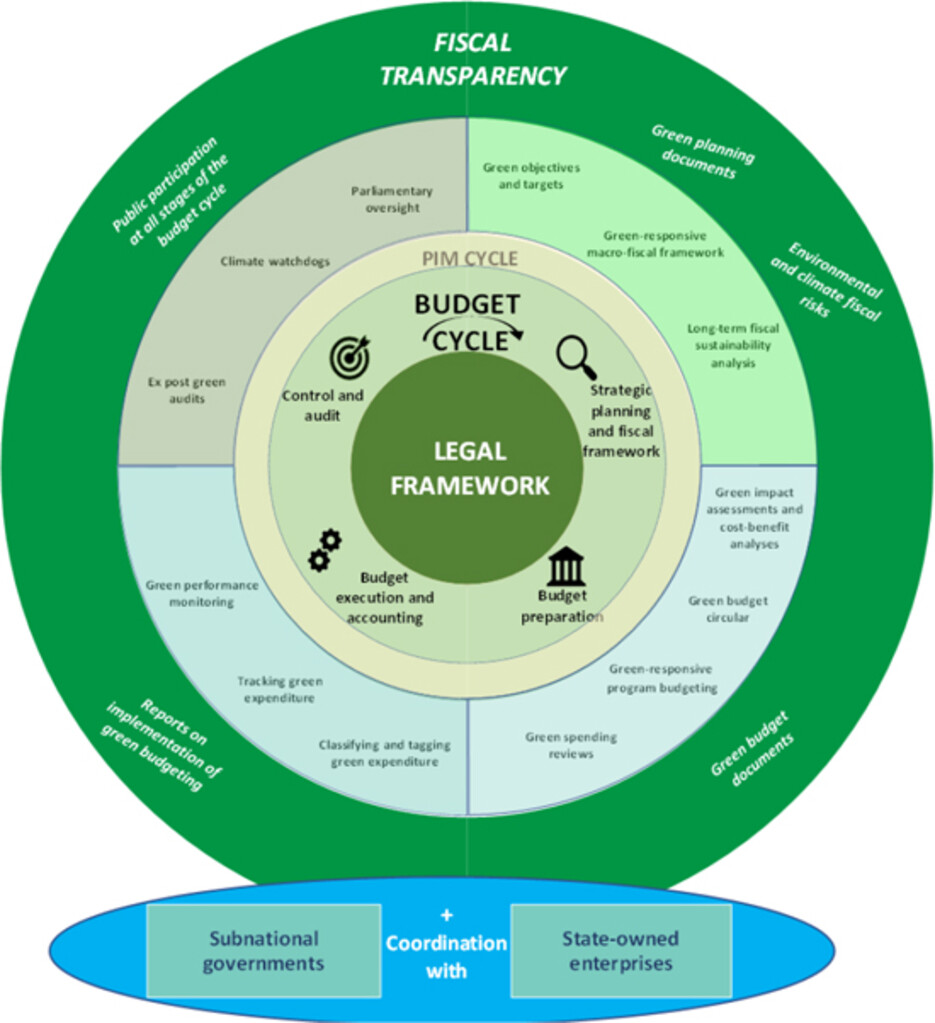
4. Jordan: Climate Module of the Public Investment Management Assessment and Green Public Financial Management
Amman, Jordan – A recent study publication “High-Level Summary Technical Assistance Reports” assessed how climate change impacts, mitigation, and adaptation responses are addressed in the public investment cycle using the Climate Module of the Public Investment Management Assessment (C-PIMA). The assistance also evaluated the scope of advancing Green Public Financial Management (PFM) practices, drawing on the IMF’s new Green PFM framework.
Jordan was found to perform well in the climate-aware planning and coordination institutions of the C-PIMA. Still, some gaps were identified in the implementation aspects of the framework, and there were several areas where the climate could be better integrated into the PFM system. The complete three (3) page assessment can be viewed via a PDF link inside this article titled “Electronic Access.”

5. Global Plastics Treaty: Why India Is Waffling on Regulating Plastic Production
New Delhi, India – A senior official from the Union Ministry of Environment, Forest and Climate Change told INDIA TODAY, “Plastic pollution is primarily caused by the mismanagement of plastic waste. Ending the use of plastic is not a simple solution. Plastic is widely used across sectors such as agriculture, water, healthcare, etc., implying that interventions are needed to tackle plastic pollution without necessarily eliminating the use of plastic altogether.
The ministry official said making this distinction was crucial. “Plastic and plastic pollution should not be used interchangeably, nor should it be seen through the same lens,” he emphasized. Regarding interventions, the official added that plastic itself was not inherently problematic. Therefore, upstream interventions related to plastic production must be carefully calibrated to avoid adverse effects on the economy.
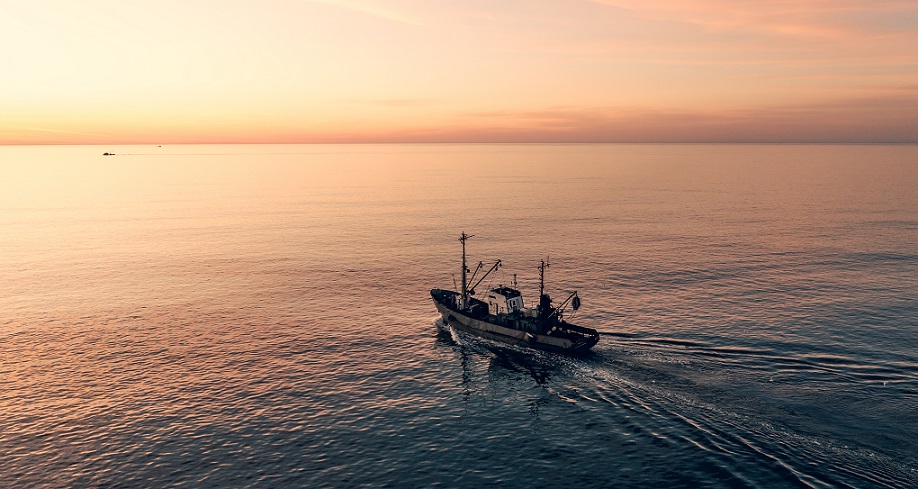
6. Sustainable Harvest of Wildlife From Waters Beyond National Jurisdiction Discussed at CITES Expert Workshop
Geneva, 13 May 2024 — About 64 percent of the world’s oceans are covered by what is known as “the high seas,” or areas beyond the jurisdiction of any State. When species regulated by the Convention on International Trade in Endangered Species of Wild Fauna and Flora (CITES) are taken from the high seas and landed in a port, this trade is regulated under CITES.
It should not be detrimental to the species’ survival in the wild. The wide distribution of species on the high seas, coupled with the possible involvement of multiple nations in their harvest, underscores the unique challenge of determining the sustainability of the harvest of these species. Do you want to know the recommendations and timeline for the path forward? Click the link!
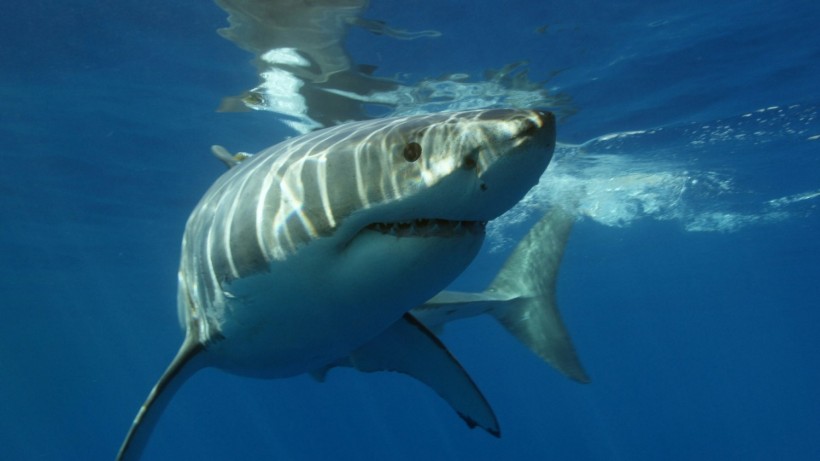
7. Shark Meat: 70% of Shark Flesh ‘Mislabelled’ in Australian Fish Markets and Seafood Shops
Canberra, Australia – A study at Macquarie University found that 70% of shark meat sold in Australia’s fish markets and shops needs to be labeled, including meat from threatened species. This highlights the ineffectiveness of seafood labeling in Australia and its implications for consumers and shark conservation. Shark populations worldwide are in danger due to slow growth and limited young shark production, making some species vulnerable to overexploitation.
The World Wildlife Fund states that overfishing and illegal fishing for shark fins significantly contribute to the depletion of marine animal populations worldwide. Shark finning, a practice where humans kill approximately 70 million sharks annually due to commercial and recreational fishing, also threatens shark biodiversity. Despite these challenges, the demand for shark meat continues to increase, according to a separate study on anti-finning laws.
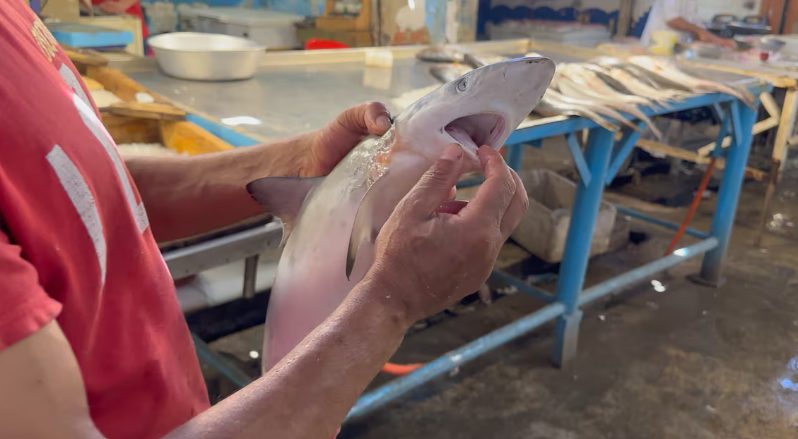
8. Fins, Fillets, and Folklore: The Enduring Allure of Shark Meat in Egypt’s Historic Suez
SUEZ, Egypt—The Al Ansari fish market, nestled in the heart of the historic city, has been supplying residents with fresh catches from the Red Sea for decades. The region’s rich biodiversity is evident in the market’s vibrant display of exotic fish. Species travel north from the Red Sea and are caught in the Gulf of Suez. The canal’s northern connection to the Mediterranean also adds to the variety of fish at Al Ansari.
But one of the offerings stands out. Shark meat, considered a delicacy by many Suez residents, is for sale. Despite being protected under Egyptian environmental law, sharks find their way into local fishermen’s trawling nets. As the world grapples with the urgent need to protect marine ecosystems, Suez’s sharks serve as a reminder that conservation efforts must also account for complex social, economic, and cultural factors.
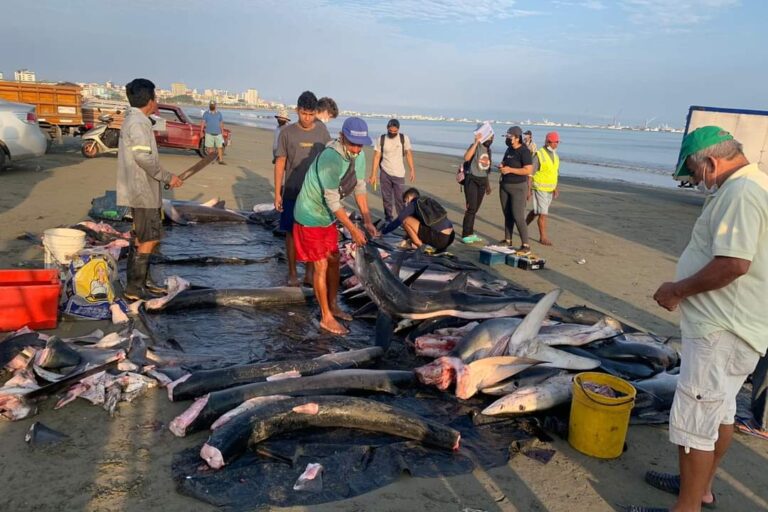
9. CITES Ultimatum to Ecuador: Stop Shark Trade; Trafficking Persists Amid Lack of Transparency
Illegal trafficking of shark fins and bodies from Ecuador to Peru has gone on for years. Ecuador recently announced measures to restrict the fishing of these animals in response to an ultimatum given last November by the Convention on International Trade in Endangered Species of Wild Fauna and Flora (CITES) demanding that the country take measures to guarantee sustainable shark fishing.
However, since the ultimatum, there have been at least three seizures of exports on the border with Peru, a transit country for shark fins en route to Asia. A lack of transparency has made it difficult to stem this criminal trade. Ecuador had until March 28th to adopt measures it should have implemented progressively for 17 years. Having failed to comply with this CITES requirement, the country is now the first in Latin America to be subject to a shark trade suspension.
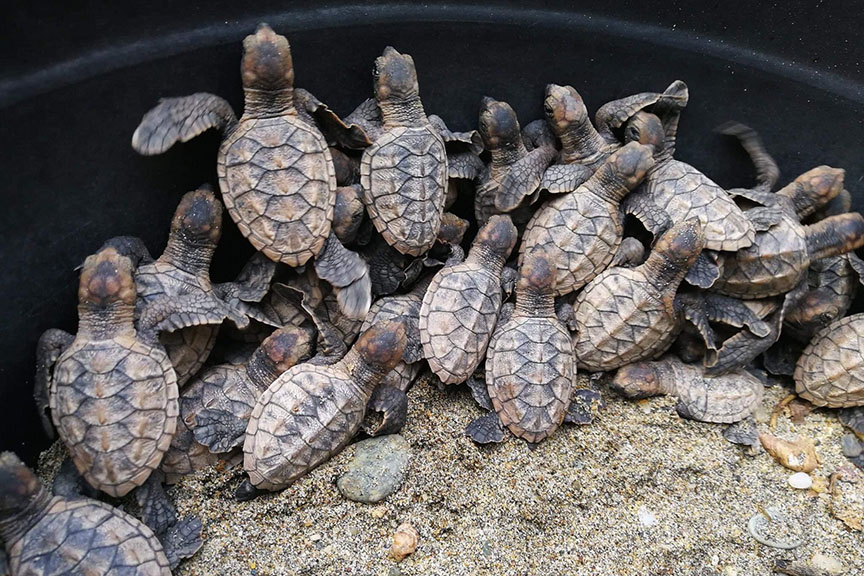
10. 117 Turtle Hatchlings Released in Zamboanga del Norte
Philippines – 117 Olive Ridley hatchlings were released back to their natural habitat in the province of Zamboanga del Norte, as announced by the Department of Environment and Natural Resources (DENR). “These hatchlings were part of a clutch of 119 eggs that had been translocated to the rescue center to protect them from various threats and to ensure a higher survival rate,” the DENR shared.
The DENR said the Olive Ridley is one of the five marine turtle species found in the Philippines and is considered one of the smallest marine turtles in the world. The Olive Ridley sea turtle is classified as a vulnerable species on the International Union for the Conservation of Nature Red List and is listed as endangered per DENR Administrative Order 2019-09. The release of the hatchlings is a testament to DENR’s commitment and priority in promoting marine conservation and protection.
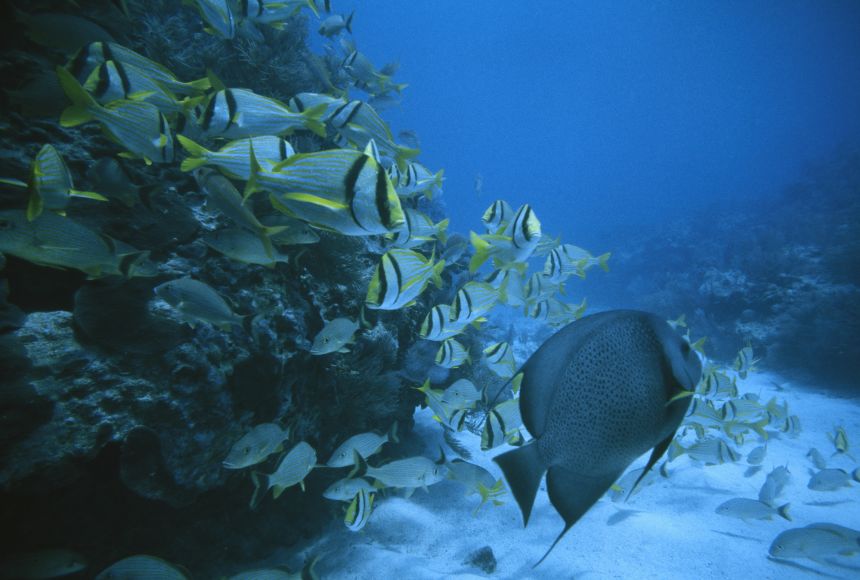
11. Shinsegae Department Store Will Work With Busan Metropolitan City to Improve the Marine Ecosystem Environment
BUSAN, Korea: Shinsegae Department Store recently announced that it has signed an agreement with Busan Metropolitan City to practice “creating a sea ecological forest” on the city’s coast. Through the agreement, Shinsegae and Busan City agreed to cooperate to promote carbon neutrality, fisheries resources, and biodiversity, improve the marine ecological environment, practice ESG (environmental, responsible, and transparent management) management, and realize a circular economy.
The project will be carried out by 2026, and plans to create one㏊ leech-grown land in the Imrang Sea area of Gijang, Busan. It will also quantitatively evaluate the effect of increasing species diversity by measuring the shape of the jalpy transplant, growth density, and biomass. Shinsegae plans to provide a total of 200 million won over two years and actively promote activities related to biodiversity conservation with its executives and employees.

12. Message in a Satellite Tag
TASMANIA, Australia: In a rare sequence of events, a satellite tag initially attached to a deep-sea skate off a remote island in the Southern Ocean washed up on a beach in southern Tasmania after traveling more than 5,000 kilometers in 10 months. The tag washed up on Bruny Island and was found by a member of the public, Mark Jaffrey.
What Dr Jaffrey found was one of 45 pop-up satellite tags deployed on Kerguelen sandpaper skates and Patagonian toothfish by Institute for Marine and Antarctic Studies (IMAS) PhD student Colette Appert and former Australian Antarctic Division (AAD) fisheries scientist Dr Jaimie Cleeland (now at the British Antarctic Survey). Dr. Appert’s research aims to understand the survival rates of sandpaper skates after they are released from being caught on fishing lines.
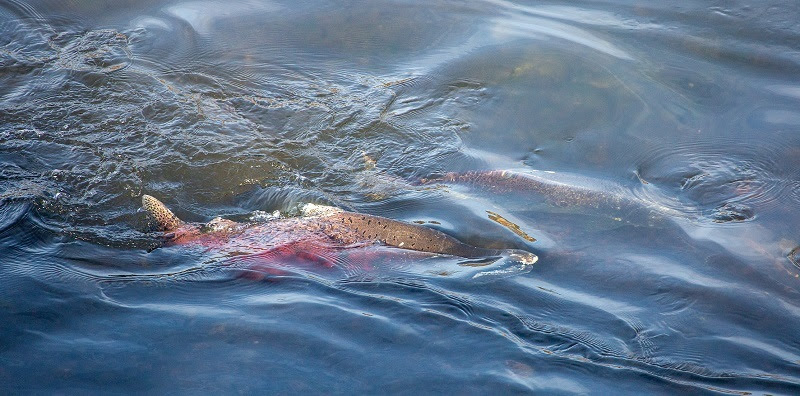
13. California Closes Ocean and River Salmon Fishing for Second Year in a Row
The California Fish and Game Commission (Commission) voted unanimously to close in-river salmon sport fishing in the Klamath River Basin and Central Valley rivers for the second consecutive year. The regulations are expected to take effect by July 1, 2024, following approval by the state Office of Administrative Law.
The in-river closures align with the recommended closure of commercial and recreational ocean salmon fisheries off the California coast by the Pacific Fishery Management Council due to continued low abundance. Federal fisheries managers have since enacted a full closure of ocean salmon seasons in California. California’s ocean salmon sport fishing seasons and regulations automatically conform to federal regulations unless the Commission acts otherwise.
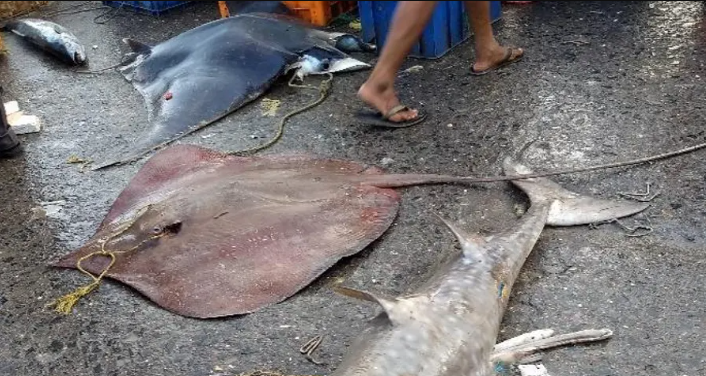
14. How Are Scientists Solving The Mystery Of Rare Rays In India?
India has been one of the world’s top shark/ray harvesting countries for several decades. However, reported harvests and fin exports have been steadily declining, and over half of rays in the northern Indian Ocean are threatened with extinction. Alissa Barnes, a shark, and fisheries biologist, constructed a project to study rays and, with that primary data, lay the foundation for targeted conservation actions and improve how fisheries are run.
“The biggest opportunity for me was to bring everything related to rays on the map and raise more awareness about this group,” she says, adding that the aim was to bridge information gaps and create a comprehensive species list. Meanwhile, Sri Lanka’s first shark and ray conservation genetics laboratory is focused on helping conserve shark, ray, and chimeras species using conservation genetics, a field dedicated to using genetic information to help conserve species.
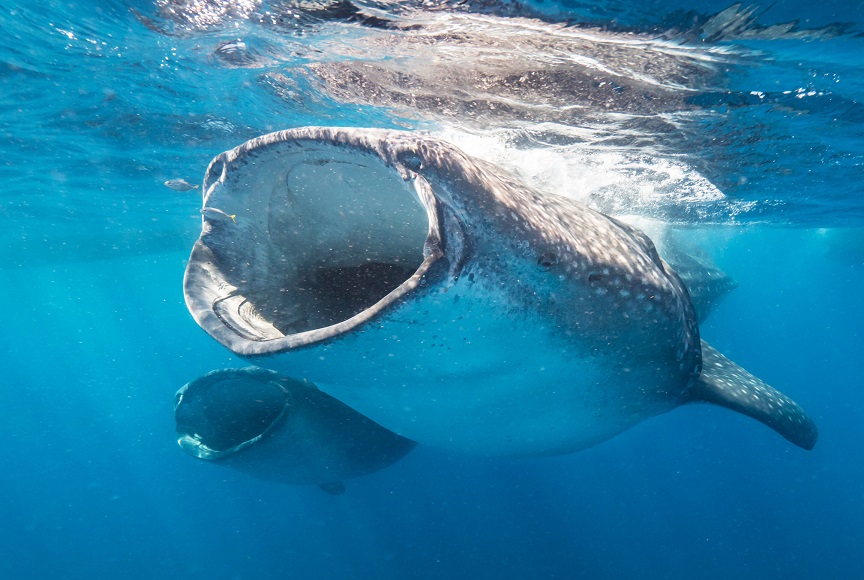
15. Identifying Priority Sites for Whale Shark Ship Collision Management Globally
The Issue – The expansion of the world’s merchant fleet significantly threatens the ocean’s biodiversity.
The Highlights—The marine biosphere is at risk from expanding maritime human activities. Collisions between large ships and marine megafauna need management attention. Shipping was measured in over 50 global whale shark aggregation sites. Peaks in shipping activity often coincided with peak seasonal occurrences of whale sharks. Changes to ship speed or transiting routes can be targeted in small, localized zones.
The Endstate – Given the threat posed by vessel collisions, a coordinated, multi-national approach to collision mitigation is needed within priority whale shark habitats to ensure collision protection for the species.

16. Controversial Florida Theme Park Fights Government-Mandated Closure, Update Given
After years of concerning inspection reports, Miami Seaquarium – a marine theme park first opened in 1955 on the island of Virginia Key in Biscayne Bay – was ordered to close earlier this year by Miami-Dade County, which accused it of violating the terms of its lease.
The terms in question were related to its duty of care to its animal residents. Various damning details have emerged about the park through its prolific USDA reports, including a dolphin found with a nail in its throat, a sea lion living in pain after a critical eye surgery was repeatedly delayed, and tank water ridden with bacteria. Click the link to read both sides of the issue.
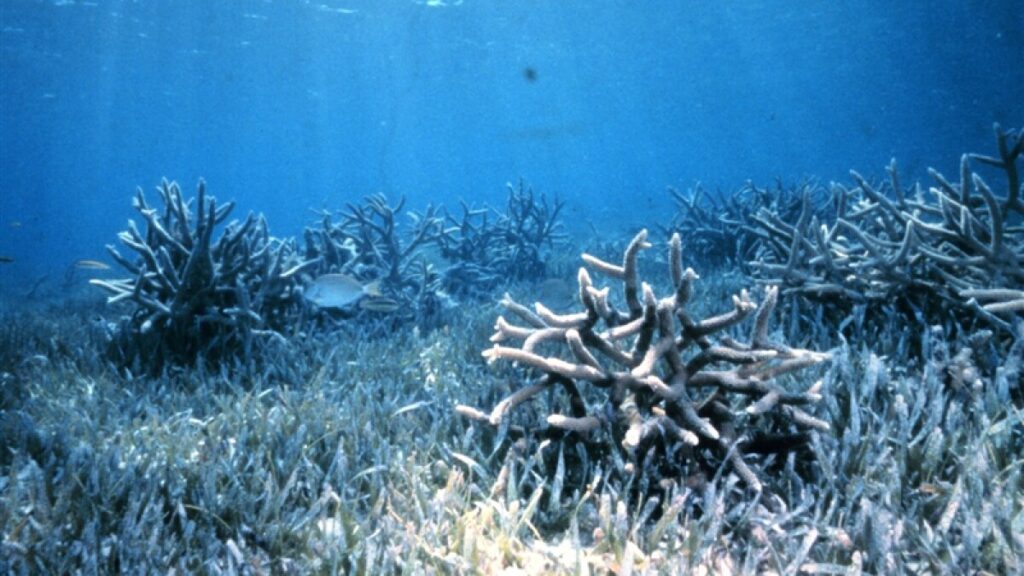
17. Florida Has Made Progress Protecting Its Coral Reefs. Now, Lawmakers Must Maintain It
Florida — Florida’s corals are in trouble, whether from disease, pollution, increasing user pressures, heat-induced bleaching, or other climate-related stressors.
That is why reef lovers and ocean advocates alike are celebrating Florida Gov. Ron DeSantis signing HB 1557, the omnibus Department of Environmental Protection bill, which includes a small but mighty provision that redesignates the Kristin Jacobs Coral Reef Ecosystem Conservation Area to a State Aquatic Preserve, a place home to a rich and diverse collection of stony corals, soft corals, macroalgae, sponges and fish. More than 6,000 species call it home, and the vibrant recreational economies and coastal communities that rely on it need these protections now more than ever.
Decision-makers at the state and federal levels must employ every available resource to protect and restore one of Florida’s most treasured resources.
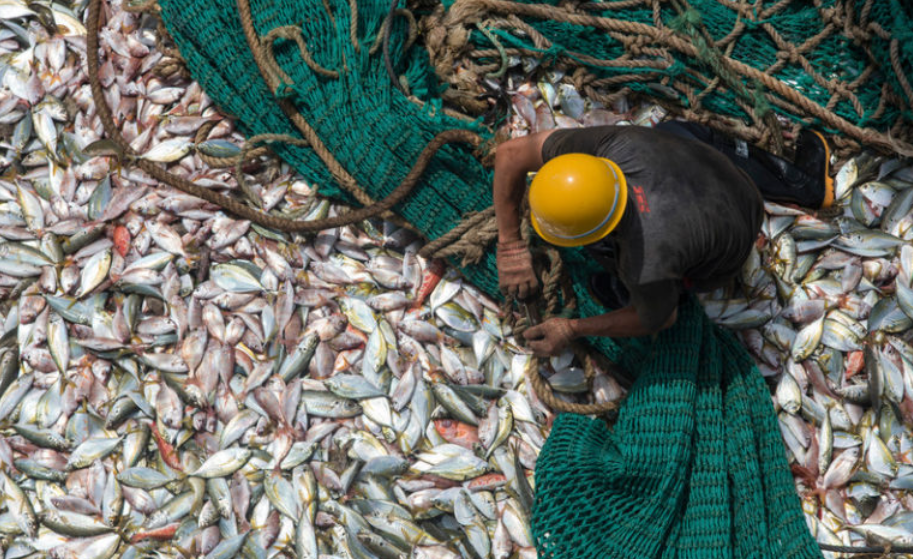
18. Transversal Policy Between the Protection of Marine Fishery Resources and Fisheries Subsidies to Address Overfishing in Indonesia
Indonesia — Eliminating fishery subsidies that exert detrimental effects on aquatic life is imperative for the government because if it continues to provide harmful subsidies to its fishing industry, then the occurrence of overfishing, which leads to the overfishing and destruction of marine ecosystems, is an inevitable consequence. Unfortunately, Indonesia frequently implements social protection through a subsidy policy to support fishing activities, particularly those undertaken by small-scale fisheries.
The typical subsidies are fuel or other sources of energy assistance that enhance fishing capacity. This type of subsidy is associated with the exacerbation of fishing or fleet overcapacity, which results in the overexploitation and depletion of marine fishery resources. This study aims to analyze how Indonesia formulates a transversal policy and a coherent strategy between the protection of marine fishery resources and subsidies to support fisheries.
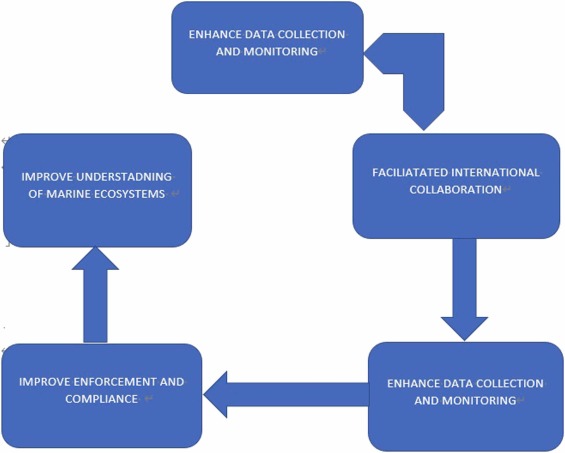
19. A New Study of Ocean Governance in Taiwan
New research looks into the relationship between technology, international law, and marine policy in Taiwan, specifically how these three factors interact to influence how the maritime environment is monitored, understood, and regulated. The research explores how cutting-edge innovation has improved sustainable marine resource management by reshaping data collecting, analysis, and decision-making via a comprehensive literature review and case studies focused on Taiwan.
The impact of international law on the standards and technologies used in marine resource management is a significant topic covered in the paper. The research shows that technology has revolutionized how Taiwan oversees and monitors its marine environment. More effective and cooperative ocean governance has resulted from the rise of evidence-based decision-making made possible by technological advancements.
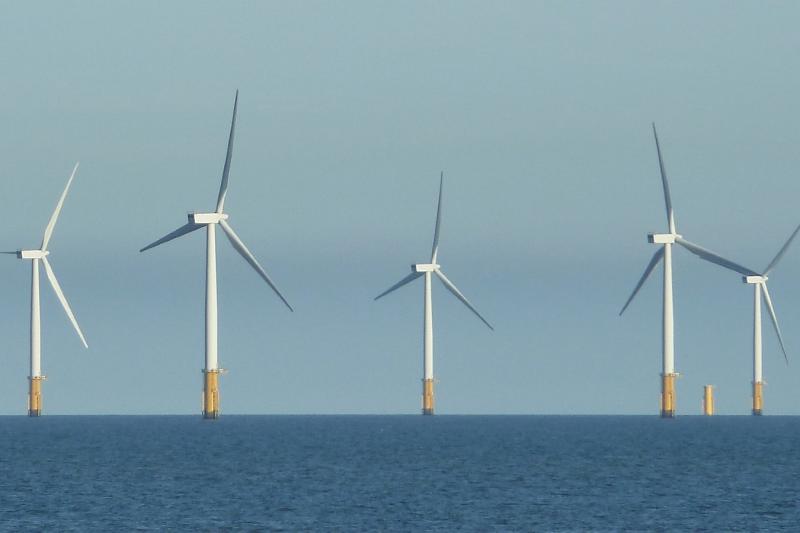
20. Fisheries Independent Surveys in a New Era of Offshore Wind Energy Development
Fisheries independent surveys require rethinking because of increasing spatial restrictions and interactions with offshore wind energy development (OWD). Scientific institutions have conducted data collections of fisheries, protected species, and the environment to meet societal demands for food security, conservation, and other marine uses. These data collections provide information on crucial resource measures essential for fisheries, protected species, and ecosystem management.
With the increase in OWD’s industrialization of marine waters, disruptions in these long-term time series can be expected. This paper presents an expert survey on the perceptions of OWD interactions with standard survey designs and survey methodologies in Europe and the U.S. It also makes recommendations for future research to continue meaningful scientific-based management advice.
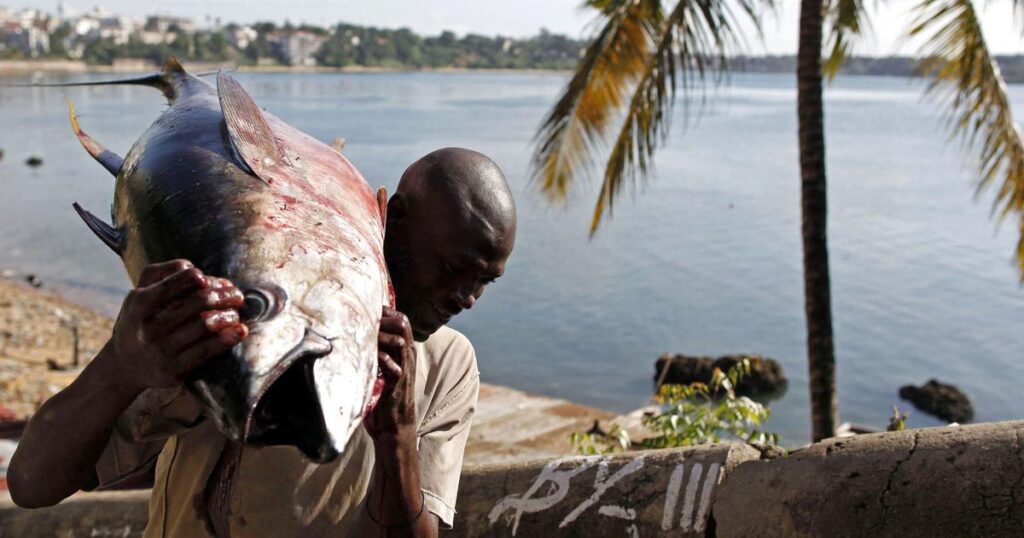
21. Use of Fish Aggregators in Indian Ocean Remains Contentious Due to Concerns Over Exploitation
Fish aggregators are artificial floating structures with hanging nets and tracking buoys. Some fishers deploy these “drifting fish aggregating devices” (dFADs), which attract tuna to hide under and around them, making them easier to catch. The 28th session of the Indian Ocean Tuna Commission will discuss proposals to regulate their use. There seems to be broad agreement that they should be made of biodegradable material and that there should be a limit on the number each boat can use.
Critics claim FADs are an “ecological trap.” According to one estimate, 32 juvenile tuna are caught for every adult yellowfin, upsetting the population balance. By making it easier to catch tuna, FADs may ultimately be facilitating overfishing. Other marine life also have a proclivity for sheltering under the structures and get caught in them.
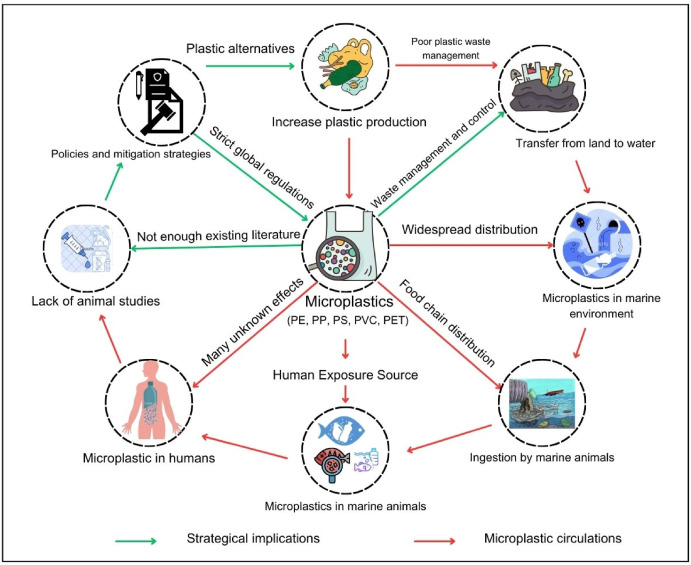
22. Microplastics in Marine Ecosystems: A Comprehensive Review of Biological and Ecological Implications and Its Mitigation Approach Using Nanotechnology for the Sustainable Environment
Below is the conclusion. Do you want to see how it was arrived at? Click the Link!
Conclusion: Microplastics have produced a complex pattern of challenges that demand our attention and action in the vast canvas of our oceans. This review summarizes the distribution, transmission, biological, and ecological effects of microplastics on marine ecosystems.
The global surveys highlight the widespread nature of microplastic pollution that has multiple effects on marine ecosystems, with physical disruptions altering the dynamics of marine life and chemical and biological consequences testing.
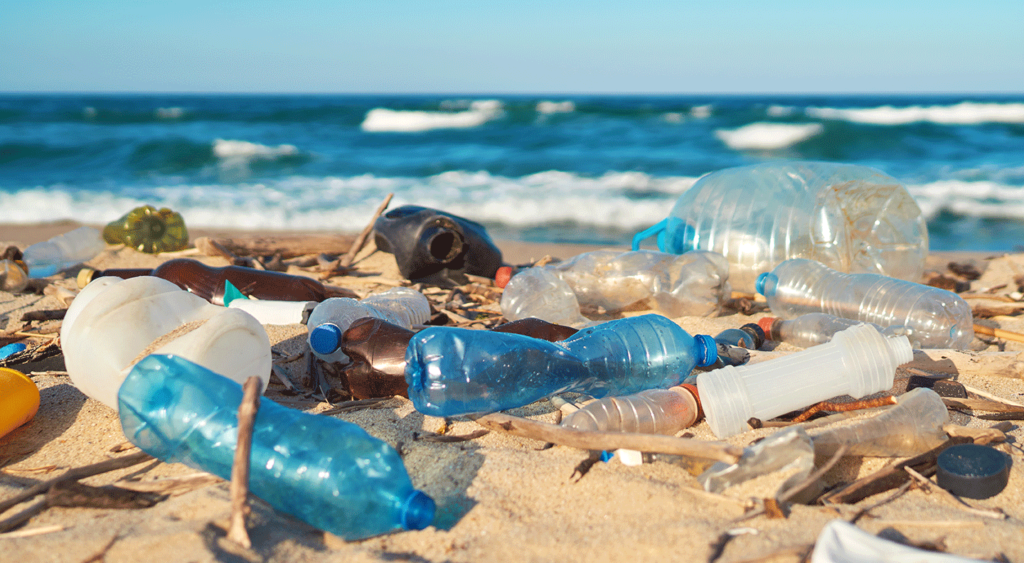
23. Zero-Sort Recycling: A Gateway to Higher Efficiency or More Garbage?
RUTLAND, VT: Zero-sort Recycling is defined as placing all of your recyclables into one can that then goes to a facility capable of receiving all types of recyclables. Interestingly, the $6 million Rutland plant encloses 125-foot-long conveyor belts mechanically separating materials with blowers and various magnets.
Seven men and women also manually combed the line, followed by three robots snatching plastic containers at lightning speed. In this scenario, 10% to 12% of the material brought in for recycling is rejected and diverted to a landfill in Coventry, Vermont. The national average is close to 25%. The volume? Six thousand (6,000) tones per month. Click the link to get the rest of the dirt (garbage!).
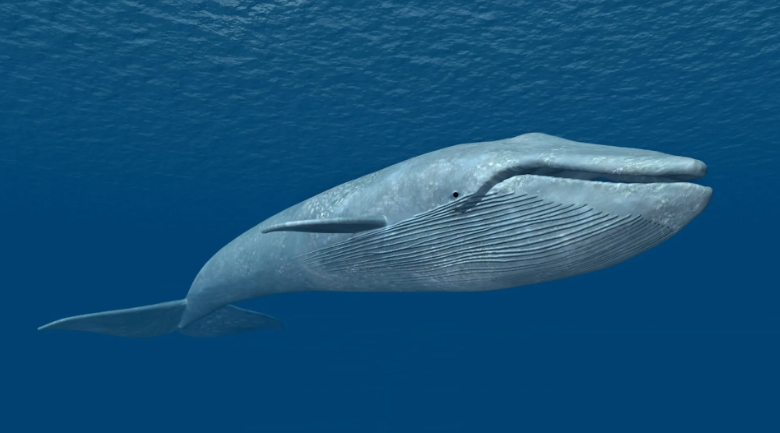
24. Underwater Audio Suggests Blue Whale Population Could Stabilize Following Centuries of Whaling: ‘To Piece Together the Puzzle of … Whether They’re Recovering’
Australian scientists have recorded the songs of blue whales in the Southern Ocean for nearly two decades, and audio analysis suggests excellent news for the world’s largest animal population. Speaking to the Guardian, Australian Antarctic Division senior research scientist Brian Miller said whale numbers are on the rise or at least stable, marking a welcome resurgence after the creatures were brought to near extinction by hundreds of years of industrial whaling.
“We can tell you where they’re frequenting and that we’re hearing them more often,” Miller told the outlet. “So that’s progress … Either they’re either increasing in number, or we’re increasing in our ability to find them, and both of those things are good news.”
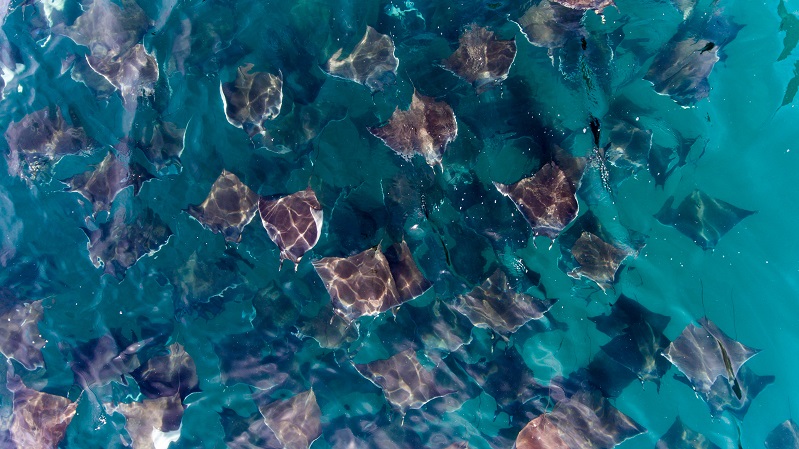
25. Deep Dive Into the Application of Criteria to Amend the CITES Appendices for Commercially Exploited Aquatic Species
Aquatic species such as sharks, queen conch, seahorses, and teatfish are among the over 40,900 animal and plant species whose trade is regulated by the Convention on International Trade in Endangered Species of Wild Fauna (CITES). At the 19th meeting of the Conference of Parties (CoP19) in 2022, a decision was made to examine more closely how the criteria are applied to these species.
In April 2024, the CITES Secretariat facilitated the Workshop on aquatic species listed in the CITES Appendices as called for in Decision 19.189 on Aquatic species listed in the CITES Appendices. CITES Secretary-General Ms. Ivonne Higuero said: “Scientific and technical exchanges are fundamental in our work to conserve and sustainably use our magnificent aquatic species. With the vast knowledge, data, and expertise represented at this workshop, we are well-equipped to engage in meaningful discussions and deliberations.”
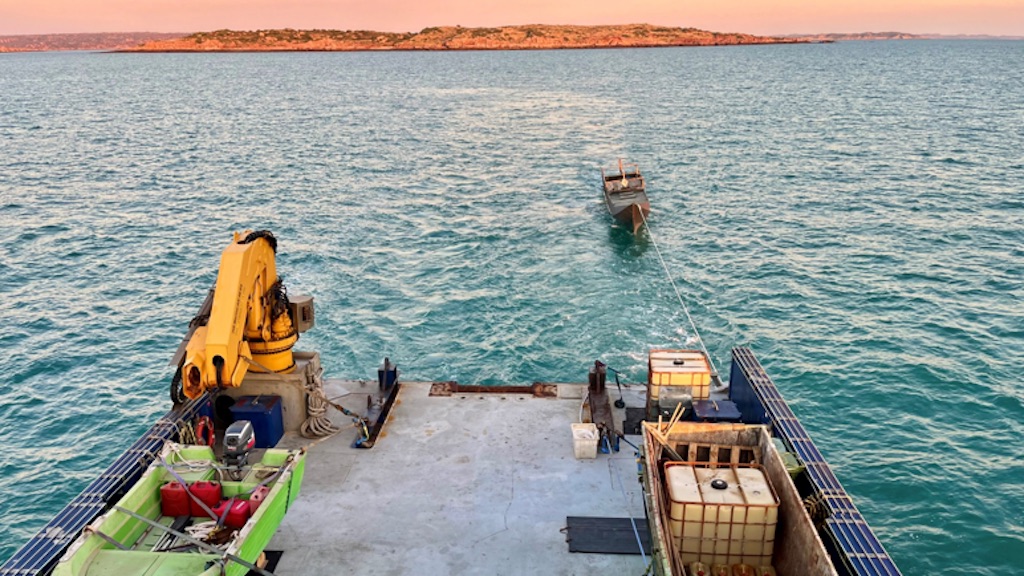
26. Authorities Seize 750kg of Shark Fin From Illegal Fishers in Kimberley Marine Park
In separate incidents throughout April 2024, Australian authorities located, intercepted, and apprehended two Indonesian vessels fishing illegally in Australian waters. Australian authorities seized a combined catch of 750 kilograms of shark fin, three stingray tails and 10 kilograms of sea cucumber (trepang). A range of equipment was also seized, including reef walking shoes, a large quantity of fishing line, nets, and 220 kilograms of salt (used for preserving catch).
Eighteen fishers were charged with various offenses against the Fisheries Management Act 1991 (Cth). All accused fishers pleaded guilty at Darwin Local Court, and findings of guilt were recorded in each case. The court noted the seriousness of the offending, with penalties ranging from imprisonment, individual fines of up to $5000AUD, and Recognizance Release Orders for first-time offenders.




